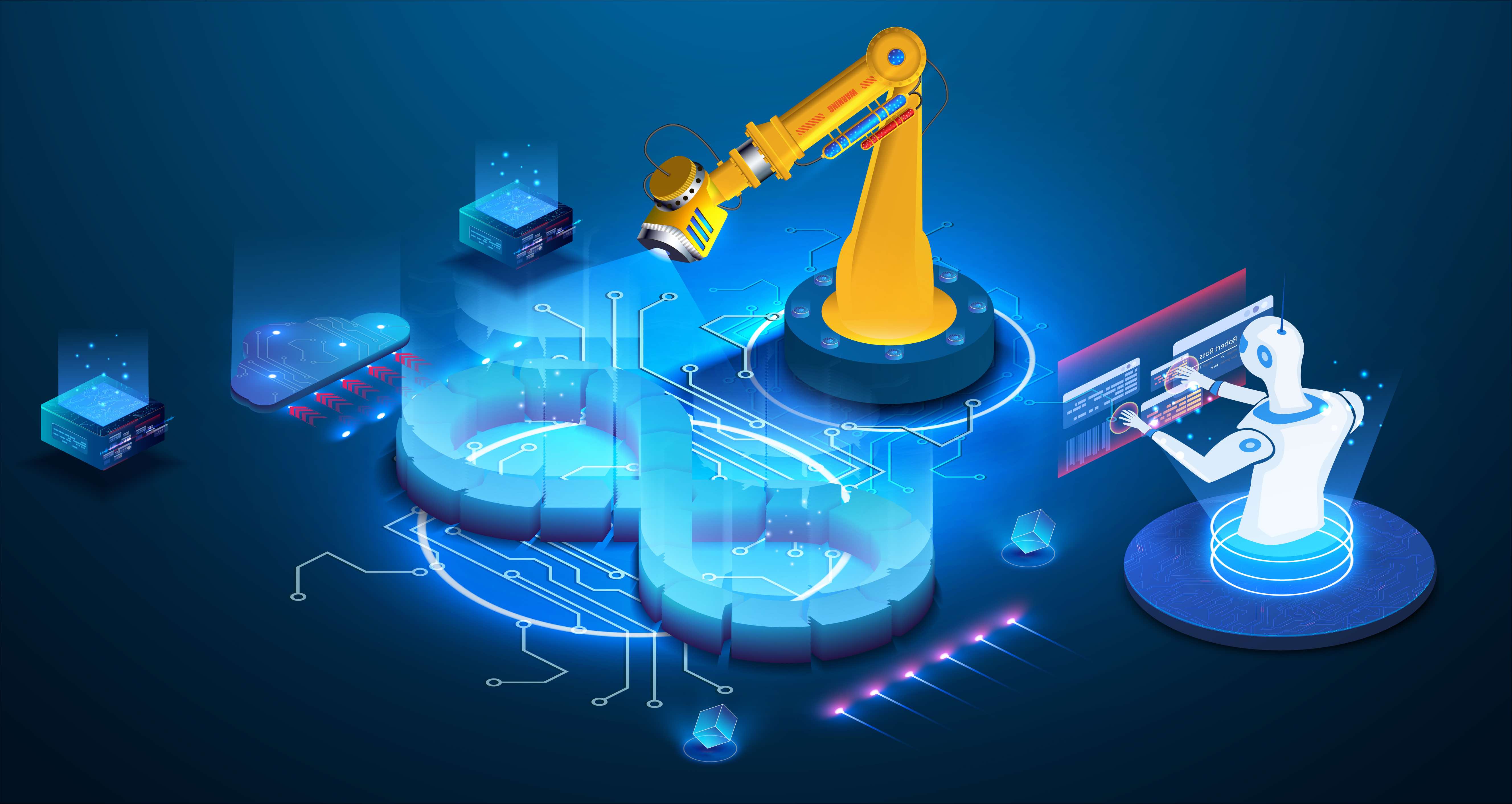Automation is no longer a wishful concept, it is a prerequisite for any organization seeking digital transformation. With the rise of cloud computing and remote work, not to mention consumer demands, organizations strive to redefine business processes and operations. That has led several organizations to adopt the DevOps practice as a means of approaching these unique challenges.
One binding principle of DevOps is automation. With automation, organizations become more reliable, efficient, and consistent, with less manual effort and cost. According to a 2020 McKinsey survey, 66% of business leaders are embracing automation for at least one organization process, in contrast to 57% in 2018.
In DevOps, automation is the process of eliminating the need for manual intervention. It enables you to automate tasks such as continuous integration & delivery (CI/CD), continuous monitoring, and configuration management.
In this article, you’ll learn about DevOps automation and what it entails.
What Is DevOps
DevOps is a cultural approach to delivering high-quality rapid application delivery and achieving faster business value by optimizing workflows and bridging silos between operations and development. As organizations face a high demand for new releases, DevOps proved to be an ideal solution.
Since DevOps is a culture, it aims to bring together development and operations by eliminating information silos and enhancing communication. It aims to rapidly move product ideas and changes from development to production by empowering developers to alter the code and infrastructure at a pace that is impossible to achieve under traditional, manual software development practices.
To fully realize DevOps within your organization, you need to embrace automation, innovation, adaptation to change, and a culture that encompasses your entire organization. The core principles of DevOps includes:
- Automation: In DevOps, you should automate processes as much as possible to reduce manual labor and time.
- Rapid Releases: The focus of iteration is to write small, bite-sized pieces of code to increase the speed and frequency of releases and upgrades.
- Continuous Improvement: Release fast, fail fast, learn and iterate. By conducting frequent unit tests, learning from failures, and acting in response to feedback, you can improve product performance, deployment times, and costs.
- Collaboration: Establish transparency, foster cross-functional collaboration, and dismantle silos.
How DevOps Works
The DevOps practice works by automating tasks and workflows. The scope of its influence extends across the entire application development lifecycle. That involves planning, design, development, testing, release, and monitoring of an application product. It enables continuous development by connecting multiple facets of development and ensuring continuous delivery throughout the entire process.
At the core of every organization implementing DevOps, there are 6 C’s that make up the DevOps cycle. The following are vital to understanding how DevOps work:
- Continuous Business Planning: Just like every agile process, at this phase, you determine the skills and technologies you need, together with a realistic and achievable goal, and the resources required.
- Collaborative Development: Design and build software according to the outlined vision of the organization while ensuring flexibility and autonomy in development.
- Continuous Testing: This makes it possible to continuously conduct unit and integration tests on code to improve efficiency and speed.
- Continuous Release and Deployment: Enables effortless code integration for Continuous Delivery pipelines.
- Continuous Monitoring: This is an ongoing process for identifying errors and resolving them. With it, you can easily track the performance of an application, find vulnerabilities and implement rapid changes before it becomes costly for the organization.
- Customer Feedback and Optimization: A core proponent in DevOps is to embrace change and innovation, feedback plays a pivotal role in making this a reality. You can get direct feedback from customers, by which you can adjust and optimize your product or development strategy.
Read more on: The Current State of DevOps
What Is DevOps Automation
In DevOps, "automate everything" is a key mantra. The DevOps lifecycle contains many repeatable steps that make automation ideal. The DevOps automation process begins when the developer writes the code, continues to the deployment, and then monitoring, which then goes back to the developer improving on the code and on and on.
The truth is, automation can come in several forms, including IT automation, AI automation, deep learning, hyperautomation, marketing automation, robotic process automation, and machine learning.
DevOps teams benefit from automation by saving time and reducing errors when building, testing, deploying, and maintaining code in a fraction of the time it takes manually. With automation, companies can implement a CI/CD pipeline, perform continuous monitoring and testing.
How Automation Enhances DevOps
One might wonder, what exactly are the benefits of automation, and does it help your business? There are many reasons for automating processes in an organization-especially in the modern age.
Speed
Automation ensures speed and quality while reducing errors due to manual operations. The more you automate, the faster your entire development operation will become. Not surprisingly, 53% of employees surveyed in the 2020 WorkMarket Report say they save close to 2 hours each day through automation.
Flexibility
With automation, you can swiftly adapt to changes within the development stack or respond to errors within your application. You can configure your application to automatically update third-party libraries and extensions and notify you if it detects breaking changes. That is much better than the traditional approach of hiring and training someone to monitor and keep an eye on everything.
Feedback
With the right DevOps tools, you can request and derive user feedback through a customer data platform. With the right processes in place, DevOps automation tools can request feedback from users while they’re using them. During the feedback process, you can continuously track trends and inconsistencies, enabling further iterations and improvement on delivering a better customer experience.
Consistency
An inherent advantage of performing repetitive tasks with automation tools is consistency. That means your application is not subject to errors in judgment, fatigue, or distractions from developers. In addition to that, a continuous testing process helps DevOps engineers identify and fix bugs faster during the build and deployment process.
Scalability
With automation, you can scale your operations as the business grows; however, the capacity of your manual processes depends on the number of employees you have to carry out the task. Despite their best implementation, most manual processes do not scale effectively. There is a limit to the human capacity of handling increasing workloads and delivering quality products.
Automating your internal processes becomes essential as you begin to work with larger data sets, capacities, and more demand for frequent releases. By automating DevOps processes, your company can leverage cloud services that allow unlimited scalability.
What to Consider Before Automation
Now you know about DevOps automation and its potential benefits for your organization, there are still a few things to consider before you automate your DevOps pipeline.
- Existing Infrastructure & Tools Pipeline: Depending on your existing tools or infrastructure, you may have different implementations of DevOps. Similarly, you may benefit more by introducing automation tools that are suited to your existing architecture.
- DevContentOps: The benefits of DevOps are tremendous for any organization; however, content management and marketing are usually left separate from the entire process. A DevContentOps approach extends the DevOps approach to accommodate content authors by providing tools, workflows, and technologies to enhance collaboration between content managers, software development, and IT operations.
- DevSecOps: Security is an integral part of any development process. However, it’s often put off till the end of the development cycle. That is contrary to the DevOps approach of continuous development and automation. DevSecOps is a development culture that promotes the integration of security into the entire development lifecycle. That way, you can continuously innovate and scale your application with greater reliability, availability, and security. With that in mind, be sure to involve your security team right from the start and throughout the entire development lifecycle.
- Artificial Intelligence and Machine Learning: AI-based algorithms can help identify interesting patterns in the DevOps process, which can help pinpoint potential bottlenecks and address them. Its usage can also extend towards continuously monitoring uptime and state of applications from development to production.
- Open Standards and Transparency: No matter how your contributors or team changes, the tools, and technologies you use need not change. By implementing open standards and increased transparency between DevOps stakeholders, you can simplify the onboarding process and reduce the need for specialized training. Additionally, cloud computing has introduced several open standards for packaging runtimes, configuration, networking, data management, and containerization.
- Clear Goals & Metrics Tracking: When using automation tools, you still need to have a clearly outlined goal or target in mind. Otherwise, how can you measure success or productivity increase? The only way to accomplish this is to track key performance indicators (KPI) and compare their values with past ones.
How Oshyn Implements DevOps Automation
Uptime by Oshyn helps to continuously provide feature improvements, platform updates, and rapid issue remediation. With Uptime, your DevOps toolchain gains an edge with an enhanced customer experience and website performance while continually ensuring reliability and security.
With the comprehensive experience, technologies, tools, and processes that Oshyn provides, customers can be confident of a reliable site with high availability and flawless operation. We offer specialized tracking and optimization both for traditional and headless CMSs. Find out more about Uptime by Oshyn.

 Christian Burne
Christian Burne




